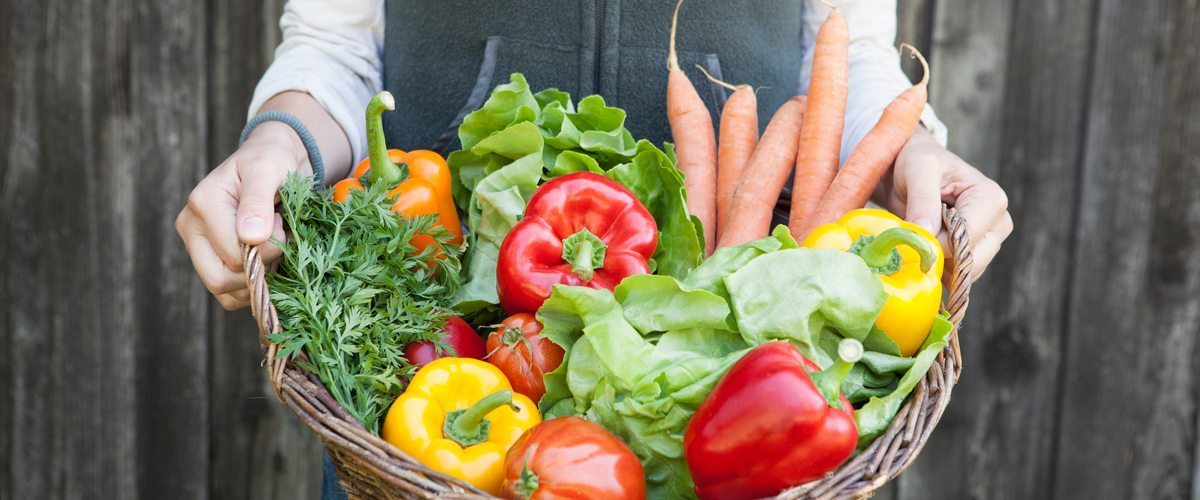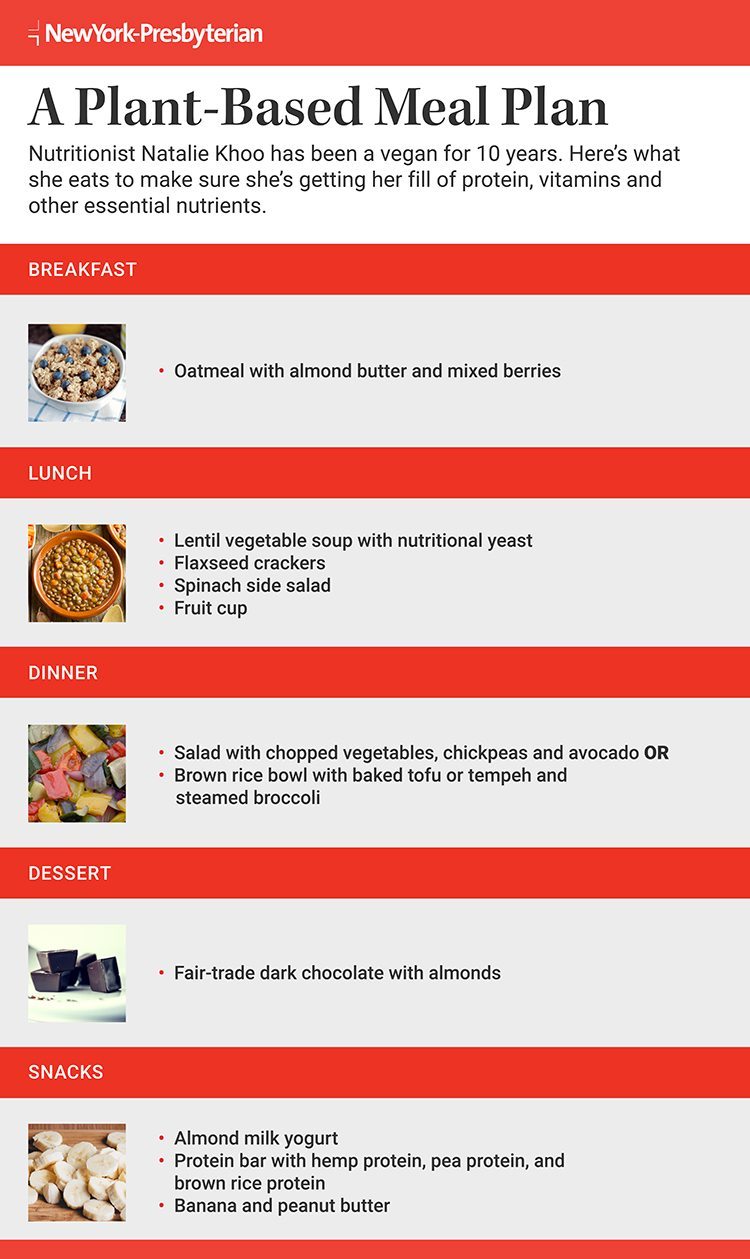Ask A Nutritionist: Plant-Based Diets
Tips for adopting a meat-free eating regimen.


Vegetarianism comes in many forms — from lacto-vegetarians, who consume dairy but no other animal products, to vegans, who choose to eliminate animal-based products entirely. The reasons people adopt a plant-based diet are equally as diverse. It’s an ethical decision for some, a matter of personal preference for others.
Whatever the variety of vegetarianism or the reasoning behind it, a meat-free diet made up largely of fruits and vegetables certainly has its merits. For starters, plant-based diets are believed to be an effective means of treating chronic disease, including diabetes. They also combat obesity and lower blood pressure and the risk for cardiovascular disease. Vegetarian diets have also been associated with lowering the risk of colon cancer.
But animal-based products have benefits, too, including some nutrients not readily available in plants. These nutrients include vitamin B12, calcium, vitamin D, heme iron, and essential fatty acids. If you’re considering going meat-free, it’s important to pay special attention to these, says Natalie Khoo, a senior clinical nutritionist at NewYork-Presbyterian Morgan Stanley Children’s Hospital.
Here, Khoo, who has been a vegan for 10 years, talks about how best to transition to a plant-based diet and the types of foods you should be consuming to ensure you’re getting the necessary nutrients.
How do you define a plant-based diet?
I’m a vegan, so to me it’s a diet that’s completely free of animal products and byproducts—no meat, seafood, poultry, dairy, or eggs.
What are the benefits of eating this way?
Plant-based diets are made up of nutrient-dense foods — fruits, vegetables, nuts, seeds, legumes, and whole grains — rich in essential vitamins and minerals, low in saturated fat, high in fiber, and free of cholesterol. Because of this, they reduce the risk of chronic illnesses like heart disease, diabetes, and even cancer.
What are the drawbacks?
Initially, it’s a hard transition for a lot of people since most of the foods we eat are centered on meat and fish and contain butter, dairy, and eggs. Also, socially, it can be tough to get family and friends on board with accepting the diet. All of these things can, of course, be overcome.
How would you recommend making the transition?
It’s definitely something you just have to try out. For example, try going vegan once a day or for one meal a week to see if you think it’s feasible. It may be difficult to go vegan overnight. Personally, I cut out red meat first. A year later, I started weaning myself off of all meat, and seafood was the last to go for me. I did it at my own pace, and that slow transition solidified the changes I was making.
How do you ensure you’re getting all the nutrients you need?
The blanket answer is to eat a wide variety of foods from all different food groups. However, there are certain nutrients found in animal-based products that are not as readily available in plants. It is important for those adopting a plant-based diet to pay attention to vitamin B12, calcium, vitamin D, omega-3 fatty acids, and iron.
How do you incorporate each of them?
There’s actually no unfortified plant-based source of vitamin B12 because it is mostly found in animal products, from the bacteria that animals eat. Luckily, nowadays a lot of foods are fortified, so you can find nondairy milks and grains with B12, calcium, and vitamin D. Nutritional yeast, which is a savory powder you can sprinkle on top of your food, contains B12 as well. A lot of vegans also take a B12 supplement. Other good sources of calcium are fortified tofu and dark green vegetables like broccoli, kale, and collard greens. Vitamin D helps with the absorption of calcium, so you need to make sure you’re getting both.
What about sources of omega-3 fatty acids and iron?
Omega-3s are abundant in fatty cold-water fish like salmon, but vegans can get them from nuts and seeds like walnuts, flaxseeds, and hemp seeds. These can be sprinkled on salads and cereals or incorporated into smoothies. Omega-3 supplements are also an option, but it’s best to get as many nutrients from food as possible. Iron is a little bit trickier because the iron found in red meat, for example, is much more easily absorbed than iron found in plant-based sources. You can help your body along by combining an iron-containing food with a source of vitamin C, which helps to release the available iron. A couple of examples are beans or legumes with bell peppers, or a salad with legumes and strawberries.
How do you make sure you’re getting enough protein?
Many people are surprised to find out that plant-based diets and recipes contain plenty of protein. Chickpeas, kidney beans, black beans, lentils, split peas, and whole grains like quinoa are all good examples of plant-based protein. There’s also soy protein found in organic tofu, tempeh, and edamame. As long as you’re eating enough food and a good balance of foods, you should be getting enough protein (approximately 50 grams daily for women and 60 grams daily for men).


